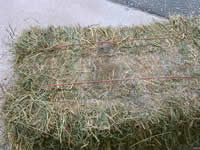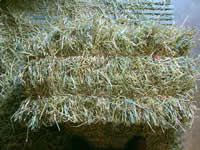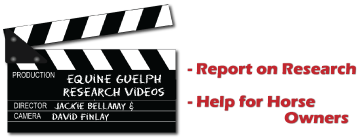Researcher Profiles
Dr. Laurent Viel
 |
"We need to help the horse from a health point of view first. This is important for the long-term health and performance of the horse. To me this is much more important than anything else." |
Why is this important?
"It's all about the horse first. If we give the "heavey" horse a better quality of life, then the owner and trainer will be happier. The time and energy we spend trying to improve the quality of life of horses by minimizing respiratory ailments, prevention of disease and permanent damage from these respiratory diseases will benefit both horse and caregiver".
Dr. Laurent Viel
Equine Related Hero: A research horse named Goldie, such a gentle mare that was so "heavey" that her owner elected to put her down but instead became the star of our research herd for over 15 years. Not only did she elevate our knowledge of this crippling condition but her wonderful personality and disposition has left an unforgettable memory with all research lab workers.
Horse background or current horse ownership:
Breeding mares both thoroughbred and standardbred
Research Laboratory: The Firestone Equine Respiratory Research Laboratory (FERRL) at the University of Guelph is a specialized laboratory dedicated to the study of respiratory physiology, disease and treatment of horses. The focus of the laboratory is the investigation of the many respiratory disorders that can develop in the equine athlete.
A major focus of the lab is understanding "heaves" (a common allergic respiratory condition in mature older horses formerly called Chronic Obstructive Pulmonary Disease (COPD) or "broken wind" in older horses) and also the allergic inflammatory airway disease in young horses known as Non-Septic Inflammatory Airway Disease (NSIAD). Heaves is an allergic reaction of the lung to inhaled particles such as dusts and molds, factors not uncommon in the horse's environment (Figure 1).
 |
 |
Figure 1: Environmental exposure to dusts and molds can trigger an episode of heaves. Moldy hay (left) is the most common source of environmental allergens in the horse's environment. A good quality bale of hay is shown on the right for comparison.
Recent work suggests that over 50% of young athletic horses suffer from this allergic airway disease, a condition very similar to human asthma. The disease is characterized by airway inflammation, which can significantly affect a horse's health, and can ultimately cause significant reduction in racing or sport activity performance.
Other research underway is the study of respiratory viruses with a special emphasis on Equine Rhinovirus (the common cold). In the past, this virus has not been considered important. The present work will lead to a better understanding of Equine Rhinovirus which will contribute to an improved control of the disease and the potential introduction of commercial vaccines.
As well, additional research is being conducted in the area of lung fluid mechanics.
Research Related Goals: Currently working on a) long term effect of persistent airway inflammation and the resulting scarring of the airways and b) the prevalence of respiratory viral infections in athletic horses in Ontario.
Degrees: DVM, MSC, PhD
Position: Professor, Large Animal Internal Medicine, Ontario Veterinary College
Responsibilities:
Lecturing, hospital clinical work, teaching undergraduate and graduate students
Member of Department of Clinical Studies Graduate Program
Member of the College of Graduate Studies Research Committee
Leader of the Firestone Respiratory Research Laboratory
OMAF Equine Research Program Coordinator
Chair of the Equine Guelph Research Committee
Past President of the Ontario Association of Equine Practitioners
Area of Specialty:
Equine respiratory disease, focusing on allergic airway disease (heaves) and Exercise-Induced Pulmonary Hemorrhage (EIPH)
Special Accomplishments / Projects:
Development of a method to study inflammation in the lungs of horses called a bronchalveolar lavage (BAL). Dr. Viel pioneered this new technology in 1979 as a minimally invasive technique for sampling inflammatory cells from within the horse's lungs (Figure 2).Today this technique is a standard diagnostic tool used world wide for both research and diagnostic purposes.

Figure 2. Microscopic view of cells collected by BAL. Multiple mold spores (arrows) have been inhaled from dusty hay, and are present along with macrophages (a type of immune cell found in the deep airways of the lung).
